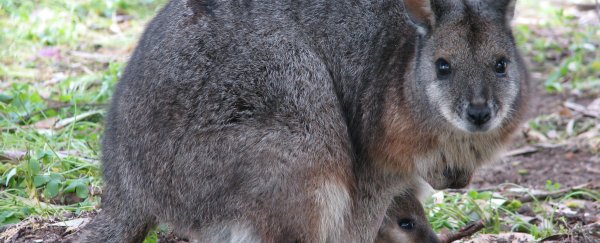Researchers from the Institute for Applied Ecology at the University of Canberra have managed to map the chromosomes of the ancestor of modern marsupials, which lived around 80 million years ago.
Throughout evolution, chromosomes undergo many changes as cells divide, with DNA being randomly mutated and the arrangement of genes being mixed up. These changes result in different species and the range of traits we see in animals today.
Thanks to the new discovery, scientists are now a step closer to tracking how the evolution of mammals led to the two distinct mammalian groups - the eutherians (which include humans, cats, dogs, etc.) and the marsupials (opossums, koalas, kangaroos).
To work out what the chromosome of a common marsupial ancestor would have looked like, the Institute for Applied Ecology team, led by Janine Deakin and Jennifer Graves, came up with a new way of physically mapping where certain genes appear on a chromosome. By fluorescently tagging genes, they were actually able to visualise their locations.
They used this method to visualise the physical structure of the native Australian tammar wallaby chromosome. Once they'd done this, they compared the genome organisation of the wallaby to the South American opossum - the only other marsupial that has sufficient information on its gene organisation available.
They then compared these marsupial chromosomes to the chromosome organisation of other common eutherian mammals, such as humans, and other vertebrates including chickens. This information helped them work out what the chromosomes of the common marsupial ancestor would have looked like.
They also were able to predict that the ancestor would only have had seven pairs of chromosomes, solving a long-standing debate.
"Chromosome number for the ancestral marsupial has been debated for over 40 years, with two distinct camps of thought," said Deakin in an Institute for Applied Ecology release.
"Proving which one is most likely to be correct has been difficult since previous techniques have only permitted comparisons of chromosome arrangement to be made among marsupials, and not between species outside the marsupial lineage. Our approach allowed us to compare the arrangement of 554 genes with more distantly related species such as humans and chickens, which provided us with the key information we need to resolve this debate."
Their results have been published in the journal BMC Evolutionary Biology.
Interestingly, the team was also able to make a few guesses about the common ancestor of ALL mammals - known as the therian ancestor.
This is the first time researchers have ever attempted to reconstruct the chromosome of this ancestor, and knowing more about it would revolutionise what we know about mammalian evolution.
"We predict that the therian ancestor had 19 pairs of chromosomes, many of which were fused together to form the large chromosomes found in the marsupial ancestor," said Deakin.
"However, more information on gene arrangement in a third group of mammals, the monotremes, is needed to confirm our predictions. We are about to start working on the echidna genome with the hope that it will fill in some of the missing blanks for monotreme gene arrangement."
Love science? Find out more about the research going on at the Institute for Applied Ecology.
Source: Institute for Applied Ecology
